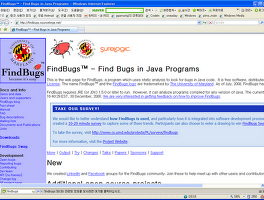반응형
여전히 책을 읽고 있다. 정확하게 말하면 요즘에는 거의 못 읽고 있다. ㅠ_ㅠ
아무튼 이 책에는 BlockingQueue에 대한 설명이 잠시 나온다.
이를 이용하면 Producer/Consumer 패턴을 만들기 쉽다고 나와서 직접 코드를 짜 본다.
synchronized block를 이용한 생산자/소비자 패턴은 아래와 같다.
( 간단하게 짜 본거라.. 뭐.. 잘못 되었을 수도 있다. 책임 못짐. ㅎㅎ )
- import java.util.ArrayList;
- import java.util.Random;
- public class PlainProsumer {
- private static ArrayList<Integer> queue = new ArrayList<Integer>();
- public static void main(String[] args) {
- Consumer c1 = new Consumer("1", queue); c1.start();
- Consumer c2 = new Consumer("2", queue); c2.start();
- Consumer c3 = new Consumer("3", queue); c3.start();
- Producer p1 = new Producer(queue); p1.start();
- }
- // 생산자. - 무언가를 열심히 만들어 낸다.
- static class Producer extends Thread {
- // INDEX
- private volatile static int i = 1;
- private ArrayList<Integer> queue;
- public Producer(ArrayList<Integer> queue) {
- this.queue = queue;
- }
- public void run() {
- // 0.5초씩 기다렸다가 데이터를 하나씩 넣어 주자.
- while(true) {
- try {
- Thread.sleep(new Random().nextInt(1000));
- } catch (InterruptedException e) {
- e.printStackTrace();
- }
- synchronized (queue) {
- // 데이터를 집어 넣고 나면, 데이터가 들어 갔다고 notify 시켜 줘야 한다.
- // 그래야 소비자들 중에서 wait하고 있는 놈들을 깨울 수 있다.
- queue.add(i++);
- queue.notify();
- }
- }
- }
- }
- // 소비자.. 생산해 낸 것을 열심히 사용하자.
- static class Consumer extends Thread {
- private ArrayList<Integer> queue;
- private String name;
- public Consumer(String name, ArrayList<Integer> queue) {
- this.name = name;
- this.queue = queue;
- }
- public void run() {
- while ( true ) {
- synchronized (queue) {
- try {
- // 데이터가 들어 있지 않고 비었다면 데이터가 올때까지 기다리자.
- if ( queue.isEmpty() ) {
- queue.wait();
- }
- // 생산자에서 데이터를 집어 넣고 notify해 줘서 wait를 벗어나 아래의 코드가 수행된다.
- Integer index = queue.remove(0);
- System.err.println("Consumer : " + name + "\tCount : " + index);
- } catch (InterruptedException e) {
- e.printStackTrace();
- }
- }
- }
- }
- }
- }
위의 코드를 확인해 보면 알 수 있다시피, queue를 사용할때 synchronized block를 사용하여 queue에 대한 권한을 획득한 뒤에, notify 및 wait를 해 주어야 한다. 이렇게 하면 괜히 코드가 복잡해 지고 synchronized block를 사용하게 되므로 하나의 block를 더 만들어 주어야 해서 코드에 점차 { } 가 많아져서 코드가 보기 어렵게 된다.
하지만 BlockingQueue를 사용하면 synchronized block를 사용하지 않고도 똑같은 구현을 할 수 있다.
- import java.util.Random;
- import java.util.concurrent.ArrayBlockingQueue;
- import java.util.concurrent.BlockingQueue;
- public class BlockingProsumer {
- private static BlockingQueue<Integer> queue = new ArrayBlockingQueue<Integer>(3);
- public static void main(String[] args) {
- Consumer c1 = new Consumer("1", queue); c1.start();
- Consumer c2 = new Consumer("2", queue); c2.start();
- Consumer c3 = new Consumer("3", queue); c3.start();
- Producer p1 = new Producer(queue); p1.start();
- }
- // 생산자. - 무언가를 열심히 만들어 낸다.
- static class Producer extends Thread {
- // INDEX
- private volatile static int i = 1;
- private BlockingQueue<Integer> queue;
- public Producer(BlockingQueue<Integer> queue) {
- this.queue = queue;
- }
- public void run() {
- // 임의의 시간마다 데이터를 넣어 준다.
- while(true) {
- try {
- Thread.sleep(new Random().nextInt(500));
- // 수정사항 - offer에서 put으로 변경
// 데이터를 넣고 나면 알아서 notify시켜 준다.
queue.put(i++); } catch (InterruptedException e) {
- e.printStackTrace();
- }
- }
- }
- }
- // 소비자.. 생산해 낸 것을 열심히 사용하자.
- static class Consumer extends Thread {
- private BlockingQueue<Integer> queue;
- private String name;
- public Consumer(String name, BlockingQueue<Integer> queue) {
- this.name = name;
- this.queue = queue;
- }
- public void run() {
- while ( true ) {
- try {
- // queue에 data가 없으면 알아서 wait하고 있다.
- Integer index = queue.take();
- System.err.println("Consumer : " + name + "\tIndex : " + index);
- } catch (InterruptedException e) {
- e.printStackTrace();
- }
- }
- }
- }
- }
보다시피 BlockingQueue는 자기가 알아서 wait 상태로 들어 가고 notify를 하게 된다.
이러한 BlockingQueue의 기능을 이용하면 생산자 소비자 패턴을 좀 더 쉽게 만들 수 있다.
BlockingQueue는 대략 아래와 같은 기능을 가지고 있다.
1. queue에 data를 넣을때 가득 차 있으면, queue에 빈칸이 생길때까지 대기
boolean put(E o) throws InterruptedException;
boolean offer(E o)
2. queue에 data를 넣을때 가득 차 있으면, queue에 빈칸이 생길때까지 시간을 두고 대기
boolean offer(E o, long timeout, TimeUnit unit) throws InterruptedException;
3. queue에 data가 없을 경우, 데이터가 들어 올때까지 대기
E take() throws InterruptedException;
4. queue에 data가 없을 경우, 데이터가 들어 올때까지 시간을 두고 대기
E poll(long timeout, TimeUnit unit) throws InterruptedException;
boolean put(E o) throws InterruptedException;
2. queue에 data를 넣을때 가득 차 있으면, queue에 빈칸이 생길때까지 시간을 두고 대기
boolean offer(E o, long timeout, TimeUnit unit) throws InterruptedException;
3. queue에 data가 없을 경우, 데이터가 들어 올때까지 대기
E take() throws InterruptedException;
4. queue에 data가 없을 경우, 데이터가 들어 올때까지 시간을 두고 대기
E poll(long timeout, TimeUnit unit) throws InterruptedException;
사실은 BlockingQueue를 사용해서 생산자/소비자 패턴을 만드는 예제는 이미 BlockingQueue의 API문서에 소개 되고 있다 ^^ ( 즉, 나는 이미 있는 예제를 만든다고 삽질한거다. ㅎㅎ )
http://java.sun.com/j2se/1.5.0/docs/api/java/util/concurrent/BlockingQueue.html
그리고 아래의 링크를 따라 가면 적당한 예제 및 사용법을 볼 수 있다. ( 한글임 )
Core Java Technologies Tech Tips - QUEUE와 DELAYED 프로세싱
http://kr.sun.com/developers/techtips/c2004_1019.html#1
반응형
'공부 > 컴퓨터' 카테고리의 다른 글
| HTTP 응답 코드 목록 (3) | 2010.07.21 |
|---|---|
| [정보] GPL을 사용하면 내 프로그램도 GPL로 공개해야 하나?? (0) | 2009.07.07 |
| [Java/Tip] 자바소스의 잠재적 버그를 잡아내는 FindBugs (2) | 2009.01.14 |
| [프로그래밍/팁] 59초 다음에는 60초일까? 0초일까? (0) | 2008.12.29 |
| [Java/Tip] String.intern()은 메모리를 아낄 수 있다? (21) | 2008.11.25 |
